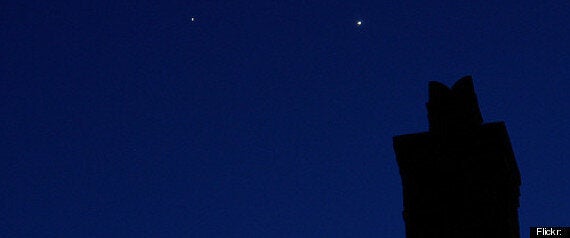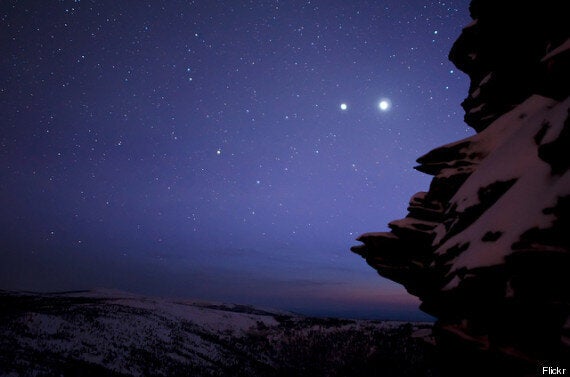Jupiter and Venus will appear to cross paths in a spectacular alignment in the night sky on Monday evening.
While in reality the planets will be extremely far apart in space from Earth they will appear to be separated by only a tiny distance.
Robert Massey of the Royal Astronomical Society said that sky-watchers should be prepared for an astonishing spectacle.
He said: "Although conjunctions are not that rare, the interest in this one is a result of how spectacular it is.
"Both planets are very bright in the night sky. If you know where to look, you can even see Venus in the day. The two being so close together will be beautiful. Last night they looked like two beacons.
The planets will appear in the southwest sky after sunset, astronomers said.
Venus is the brighter of the planets. Jupiter will drift past on the left side of the planet, as it will appear from Earth, over the next eight days.
The conjunction is being broadcast live online by the Slooh network of telescopes
Venus returns to the same point in the sky every eight years, and usually with the same dazzling brightness - as was seen in 2004.

Above: Venus (r) and Jupiter (l) will appear very close in the night sky.
Massey said that the event will be visible by the naked eye.
"It is also interesting for people because it just happens to be something which you can see for yourself. In the northern hemisphere we should look for them in the south west this evening. The pair will appear to move to the west over the course of the night.
"While the pair will drift apart after a couple of days, Jupiter will be visible for at least another two weeks."
Last Monday, Mars made its closest pass of earth in more than two years, and in June Venus will appear to cross in front of the sun from some positions on Earth.

This amazing image of the Jupiter/Venus pass was taken by Flickr user Musubk
CORRECTION: An earlier version of this story stated that Venus orbits the Sun every eight years, when in fact Venus orbits the Sun every 224.7 Earth days.